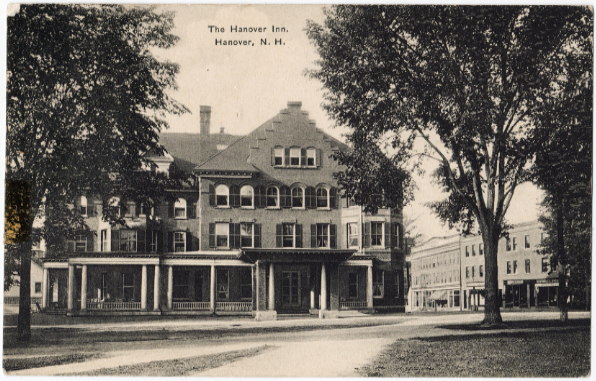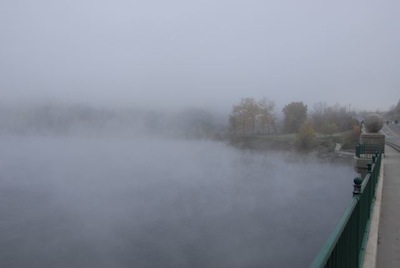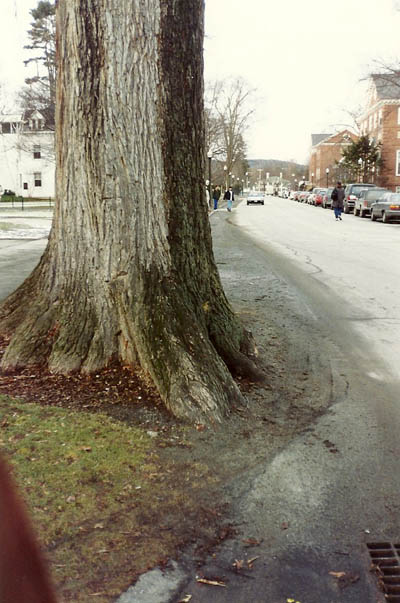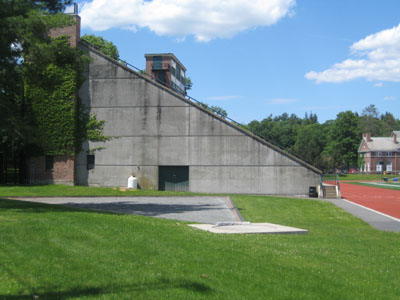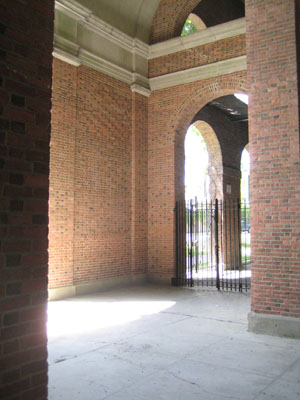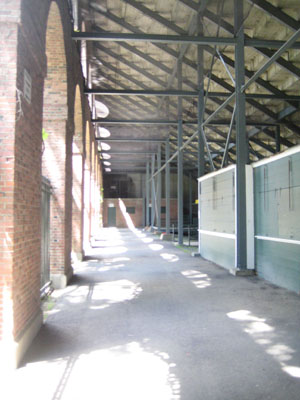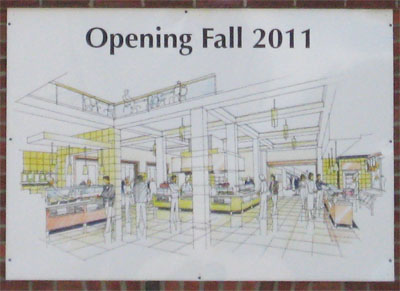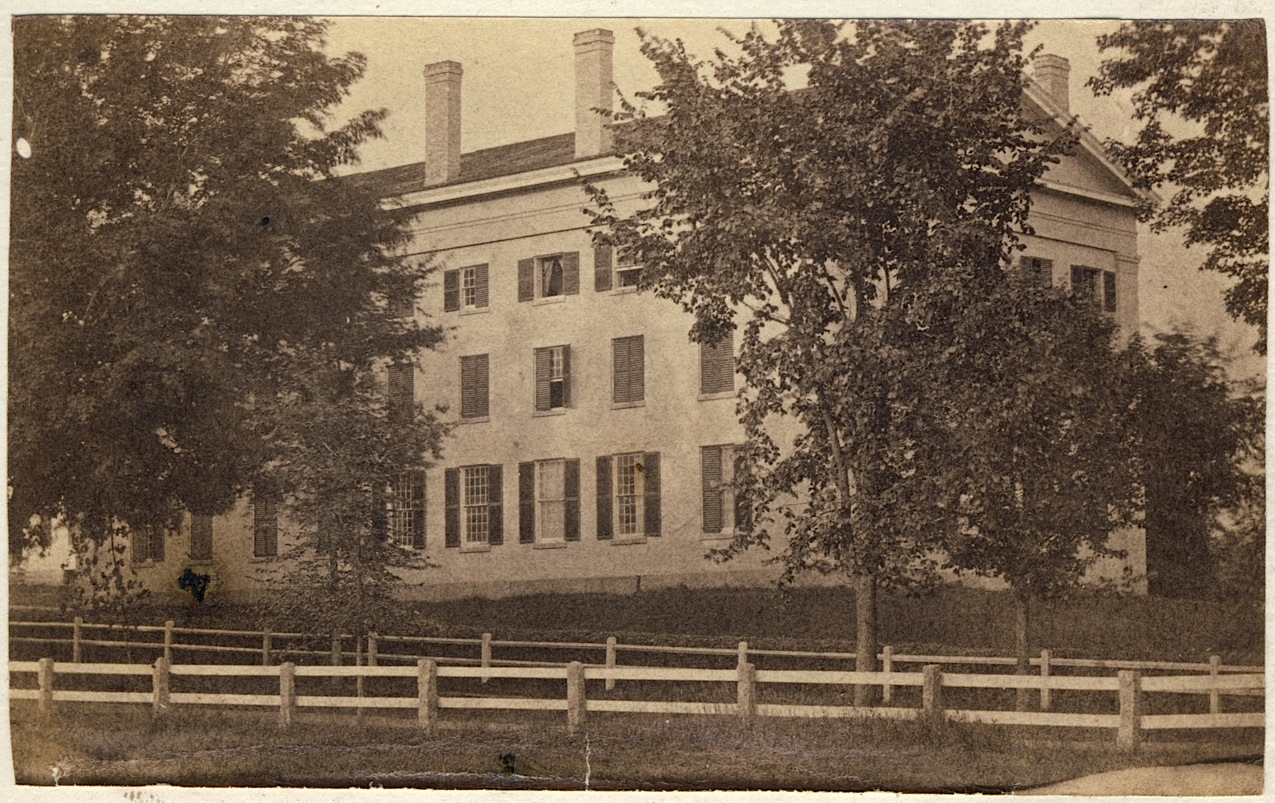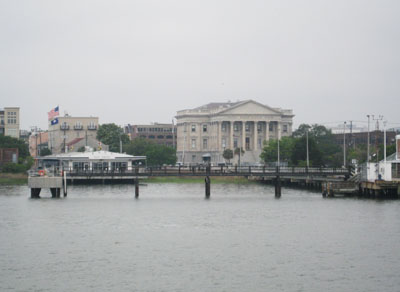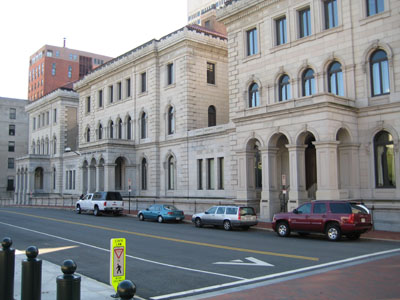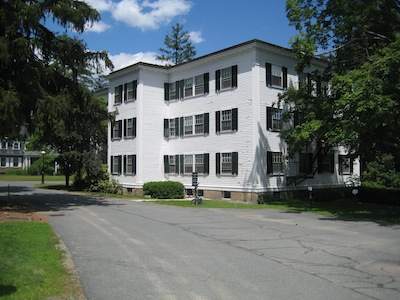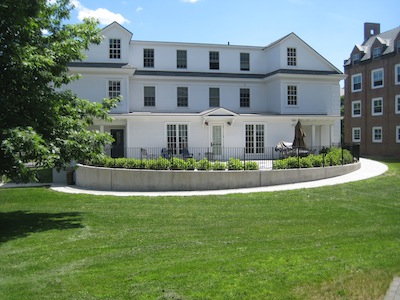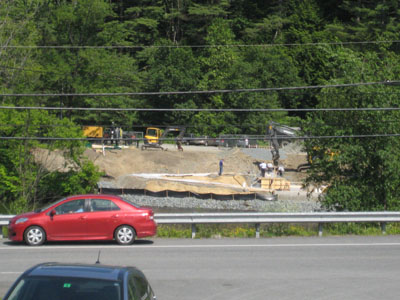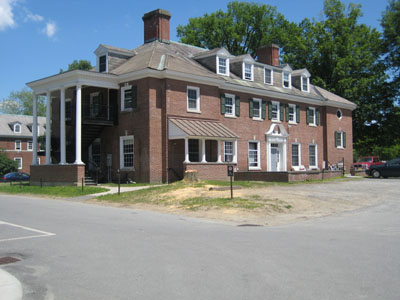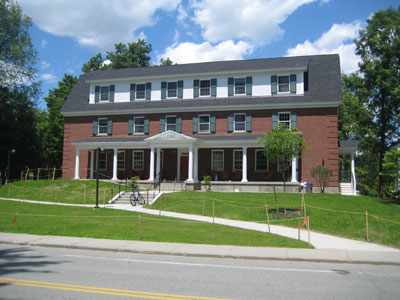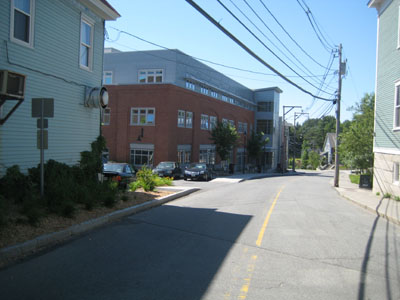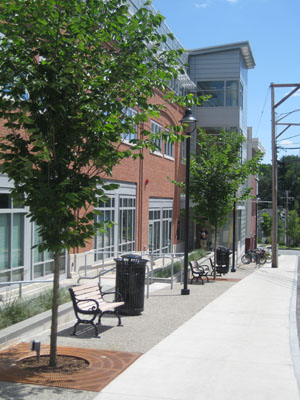The Alumni Magazine published two letters critical of a rendering of the proposed Inn addition. (It is not clear that the rendering represents a final design.)
One writer laments the lack of a railing for putting one’s feet upon, although the rendering shows clearly that the existing railing, located within the arcade that screens the recessed porch where the rocking chairs are, will be retained.
The same letter called the design “nontraditional,” and that might be accurate. The most prominent part of the addition will be a new porte-cochere, and the rendering seems to show it as a Modernist structure. But look at the Inn itself: it features an uncharacteristic mansard roof; a lack of shutters; the omission of traditional building details such as quoining, lintels, or sills; and the absence of columns or much reference to the Classical orders. The main block of the Inn was designed by Hilton architect William B. Tabler and completed in 1967.
